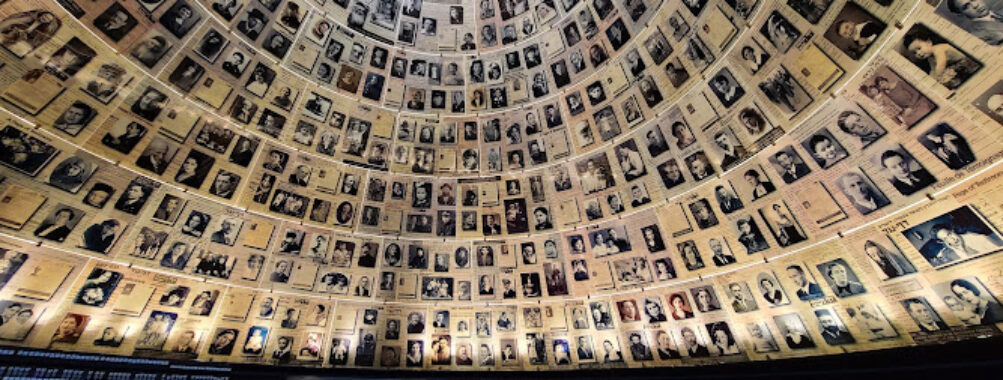
Yad Vashem
“`html
Table of Contents
Description
Yad Vashem, the World Holocaust Remembrance Center in Jerusalem, stands as one of the most profound and emotionally stirring places a traveler can visit. It’s not your typical museum experience—it’s a journey through memory, resilience, and humanity. Walking through its halls, you feel the weight of history pressing gently but unmistakably on your shoulders. I remember my first visit: the silence that filled the air wasn’t empty—it was alive with stories, with echoes of lives once lived. It’s not an easy place to describe, but that’s part of its power. You don’t just see exhibits; you feel them.
The museum’s architecture itself feels intentional—sharp angles, subdued light, and open spaces that seem to breathe both grief and hope. Inside, the exhibitions guide you through personal testimonies, photographs, and artifacts that piece together the lives of millions affected by the Holocaust. It’s haunting, yes, but it’s also deeply human. You leave with a sense of responsibility—to remember, to tell, to care.
Outside, the memorial gardens and monuments offer a quieter space for reflection. The Hall of Names, for instance, is one of those places that stays with you. It’s a circular room lined with photographs and names of victims, each one representing a story cut short. I found myself standing there longer than I expected, just absorbing the enormity of it all. And yet, despite the sorrow, there’s a strange comfort in knowing that remembrance itself is an act of defiance against forgetting.
Key Features
- Comprehensive museum exhibitions chronicling the Holocaust through personal stories, documents, and multimedia presentations.
- Guided tours led by knowledgeable staff who bring context and compassion to every detail.
- Architecturally striking design that enhances the emotional and educational experience.
- Memorial sites including the Hall of Names, the Children’s Memorial, and the Eternal Flame.
- Onsite amenities such as a café, restaurant, restrooms, and Wi-Fi for visitor convenience.
- Accessibility features including wheelchair access, assistive hearing loops, and accessible restrooms and parking.
- Gift shop offering books, educational materials, and meaningful souvenirs.
- Occasional live performances and special events that deepen understanding of Jewish heritage and remembrance.
Best Time to Visit
Jerusalem can be quite hot in summer, so if you’re planning a visit, spring and autumn are ideal. The weather is mild, and the light filtering through the museum’s angular windows feels softer—almost poetic. Personally, I prefer mornings. The crowds are smaller, and there’s something powerful about starting your day in a place that demands reflection. You’ll want time afterward to process what you’ve seen, maybe over coffee or a quiet walk nearby.
Keep in mind that Yad Vashem observes Jewish holidays, so check the schedule before you go. Fridays tend to be shorter days, and Saturdays the museum is closed. Visiting during the week allows for a calmer, more contemplative experience. If you’re the kind of traveler who likes to take things in slowly, give yourself at least two to three hours—you’ll need it.
How to Get There
Getting to Yad Vashem is pretty straightforward once you’re in Jerusalem. If you’re staying in the city center, the light rail is one of the easiest options—just hop on and ride to the Mount Herzl stop, which is a short walk from the entrance. Taxis and rideshares are also convenient, especially if you’re traveling with others or want to avoid public transit crowds.
For those driving, there’s a paid parking garage nearby, though it can fill up quickly on busy days. I’ve learned the hard way that arriving early saves a lot of stress. Some guided tours of Jerusalem include Yad Vashem as part of the itinerary, which can be a great option if you want historical context without worrying about logistics. And if you’re the adventurous type, walking from Mount Herzl through the surrounding greenery offers a peaceful approach before the emotional intensity of the museum itself.
Tips for Visiting
First things first—give yourself time. This isn’t a place to rush through. The exhibits are dense, emotionally and historically, and you’ll want to pause often. Bring tissues; many visitors find themselves unexpectedly moved. I sure did.
Book your tickets in advance if possible. It saves you time and ensures entry during peak tourist seasons. The museum offers guided tours in several languages, and I can’t recommend them enough. Having someone explain the context behind certain artifacts or photographs makes the experience even more meaningful.
Photography is restricted in some areas, and honestly, that’s a good thing. It encourages you to be present rather than focusing on capturing the perfect shot. Dress modestly and comfortably—this is a memorial space, after all. The temperature inside can be cool due to climate control, so a light sweater isn’t a bad idea.
After your visit, take a moment to decompress at the onsite café. The coffee is decent, and the atmosphere gives you space to reflect. You’ll probably want a quiet moment before heading back into the bustle of Jerusalem. If you’re traveling with kids, consider preparing them in advance; while the museum is educational, some exhibits are very intense and not suitable for young children.
Lastly, approach Yad Vashem not just as a tourist attraction, but as a place of remembrance. It’s an experience that goes beyond sightseeing—it’s about empathy, history, and the human spirit. You’ll leave changed, in ways both subtle and profound. And maybe, like me, you’ll find that it reshapes how you see the world—not just the past, but the present too.
“`
Location
Places to Stay Near Yad Vashem
Find and Book a Tour
Explore More Travel Guides
No reviews found! Be the first to review!